Wondering how to introduce your Business on Social Media?

Social media is a powerful tool that can help you grow your small business, build brand recognition, and connect with your audience. Till the end of this post you’ll get to know how you can introduce your business on social media and maintain an effective presence on it.
Want to know the benefits of social media for your business?
7 powerful steps to introduce business on social media
Following are step-by-step ways that you can follow to introduce your business on social media and make great impression.
1) Create Your Brand Story
Your brand story is the foundation of your social media presence. It defines:
- Core Values– The principles that guide your company’s actions.
- Mission– The purpose and goals of the company.
- Personality– it defines the characteristics of your brand.
- Value Proposition– What makes you stand out from your competitors.
What is a Brand Story?
A brand story is a spoken or written document that shows your company’s journey and highlights how your vision has evolved while staying true to its purpose. This story helps you to emotionally connect with your target audience, stand out from your competitors, build brand awareness and brand loyalty. It also build trust among your audience.
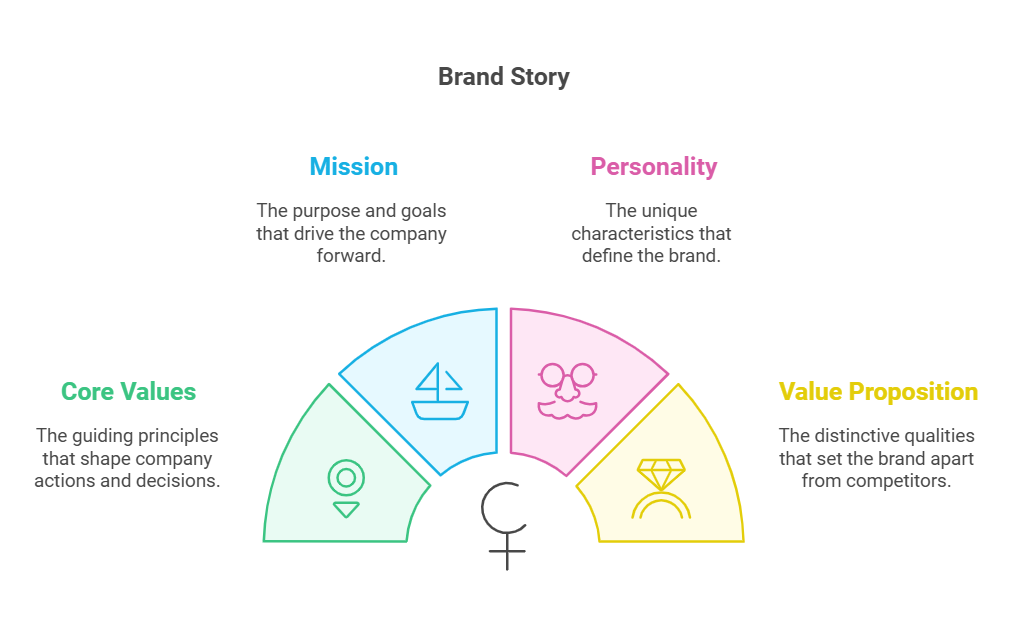
REMEMBER Be authentic , your audience like honesty and transparency.
2) Identify Your Target Audience
Once you’ve created your brand story, another question might come to your mind.
How to Define Your target Audience?
At first it may sound like a complex task, but trust me it is very easy. All you need to do is create a customer avatar.
NOW WHAT IS A CUSTOMER AVATAR?
Don’t worry you’ll get to know soon. Keeping your product or service in mind , just think of a person or you can even create a rough sketch on a paper, who would benefit from or show interest in your product or service. Write down the details.
You may consider these factors
- Demographics – Gender, Age , Education, Occupation, Income level etc.
- Interests and Behaviors – Hobbies, Preferences, and Spending Habits.
- Information sources – From where does that individual get information
- Objections – potential objections they might have.
The person that you’ve just defined is your customer avatar. Now, you can use this customer avatar to define your target audience. However, before finalizing your target audience, you need to consider a few questions : does this avatar have the authority to make purchasing decisions or influence them?
The answers of these questions will help you narrow down and identify the right people to target. Once you’ve decided your target audience, you’re already halfway there.
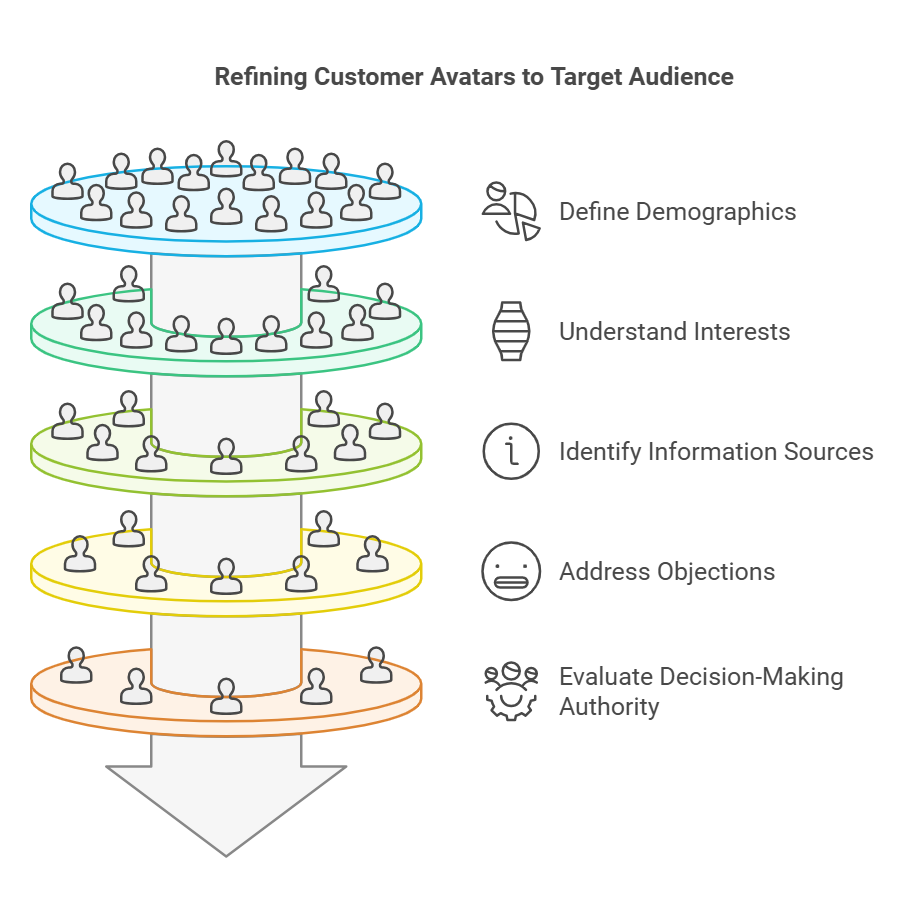
RESULTS This process will help you to pinpoint who you’re targeting and make it easier to connect with your audience effectively.
3) Choosing the Right Social Media Platforms
Each social media target different demographics and goals. Focus on the platforms where your target audience is most active.
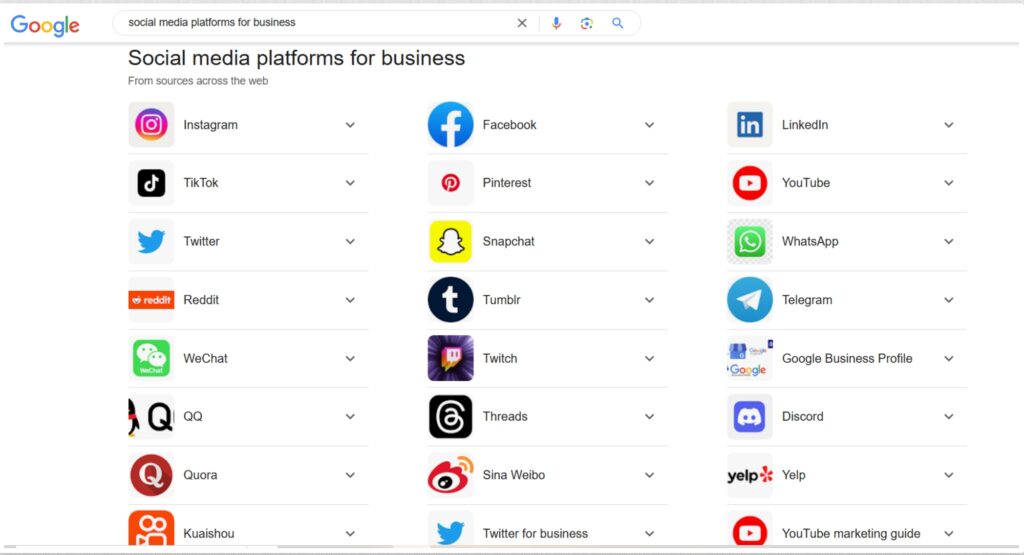
How to Choose the Best Platforms?
i. Research Your Competitors
- Identify which platforms do they use.
- Analyze what works for them and what does not.
- Identify how engaged their audience are on each platform.
ii. Understand your target audience
- Gen Z – we see that people of age group 11 – 28 are more active on Instagram and YouTube.
- Millennials– if we want to target people of age group 28- 40 we may consider Instagram, Facebook, LinkedIn.)
iii. Align With Your Social Media Marketing Goals
- Brand Awareness – If your goal is to create brand awareness among people, you may consider platforms like Instagram and YouTube are ideal.
- Lead Generation – if you aim at attracting audience and turning them into potential customers , Facebook and LinkedIn work well.
- Customer Support – if your goal is to provide customer support, choose platforms with easy messaging, such as WhatsApp or Facebook Messenger.
iv. Consider available Resources
- Budget – Can you afford paid ads or not?
- Time – How much time are you willing to dedicate to content creation and engagement?
- Expertise – Do you or your team have the expertise to run the platform effectively?
TIP :- Do not rush , begin with one or two platforms before expanding to more.
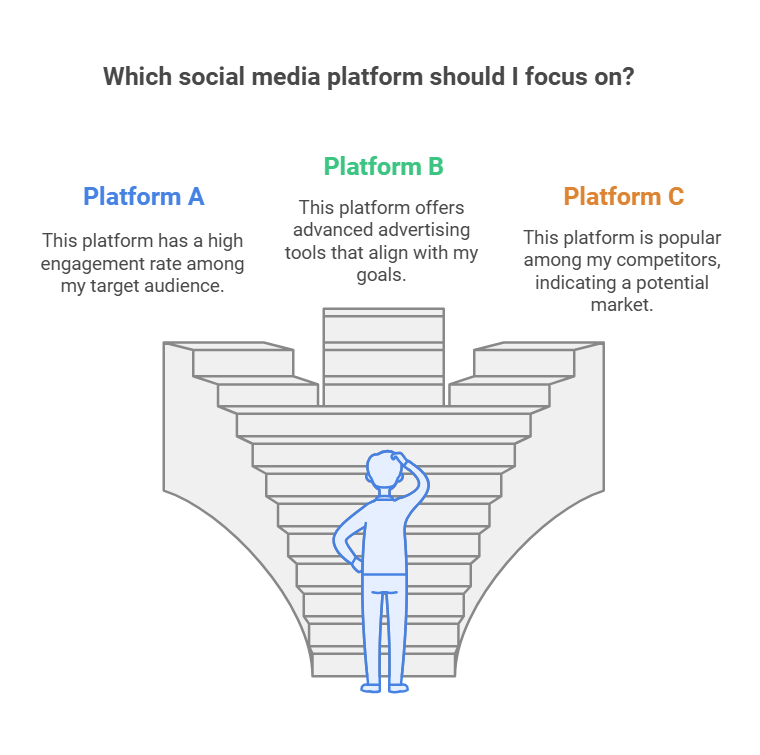
4) Create Engaging Initial Posts
Once you’re done selecting the platform, the next step is to begin creating content for your social media. So now you must be wondering from where to start.
The first step is to introduce your business on the selected platform.
When you are introducing your business on social media , you need to focus on establishing its unique identity, building trust, and highlighting the value it provides.
What to Include in Your Initial Posts?
- Visual Identity – Create your first post displaying the logo and brand.
- Core Message – Emphasize on your mission, objectives and values.
- Product or Service – Share pictures or glimpse of what you offer.
- Call to Action (CTA) – Don’t forget to add CTA. This will encourage people to follow, visit your website, and contact you.
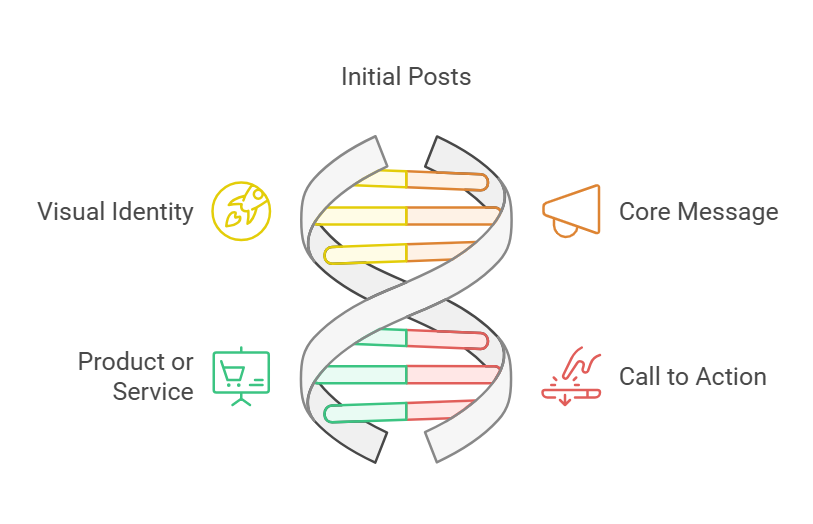
5) Stay Active On The Social Media
Once you introduce your business on social media, your top priority should be to engage with your audience for the long term.
To achieve this, you need to remain active on the chosen platform.
Here is what you can do to stay active:
i. Post Regularly
- Consistently share offers and content to keep your audience updated and maintain visibility.
- You may use a content calendar to schedule posts.
ii. Provide Valuable Content:
- consider posting tips, tutorials, and behind-the-scenes content to keep your audience engaged.
- Priorities sharing testimonials and success stories, this will help you build trust among your audience.
iii. Engage With Your Audience
- Make sure to promptly respond to comments, messages, tags and mentions.
- You may also host polls, quizzes, and Q&A sessions to address common queries. This will help your audience to actively interact with you.
iv. Use Visual Content
- You may also share professional photos, engaging videos, and infographics.
- Try frequently posting reels and short-form videos.
v. Leverage Stories and Live Videos
- Don’t forget to share daily updates through stories.
- You may also host live streams if you want to update audience about any launch or have a casual chit-chat session
vi. Run Contests and Giveaways
- You may also run contests and offer prizes for participation. This will help in increasing engagement.
vii. Collaborate
- You can also Collab or partner with influencers or complementary businesses .
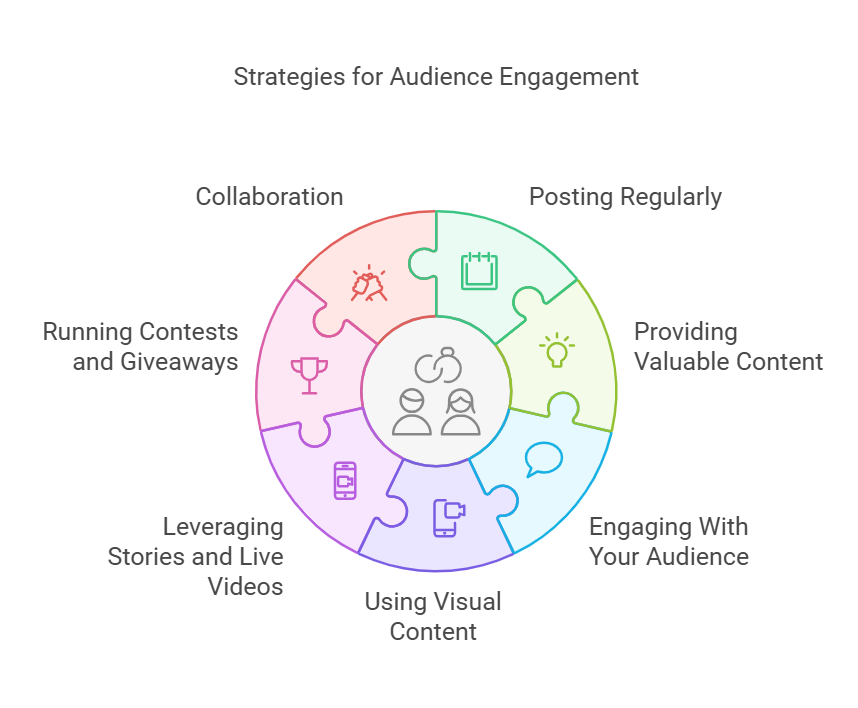
6) Track Performance and Adjust Your Strategy
Don’t forget to regularly track your social media performance, this will help you to alter your approach and strategies.
What to Monitor?
- Track engagement metrics like likes, comments, and shares.
- Audience reach and impressions on your posts and stories.
- Estimate ROI from paid campaigns using different tools.
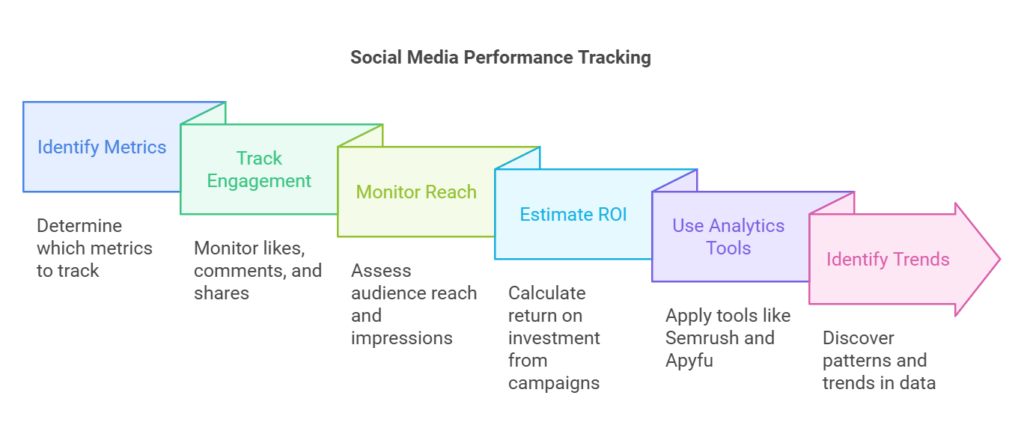
TIP :- You can use different analytics tools like, Semrush, spyfu, ahref to identify trends and alter your content strategy.
7) Expand Your Social Media Presence
When you’ve built a strong foundation on one or two platforms, you’re all set to expand your business to other platforms as well, that align with your business goals and audience.
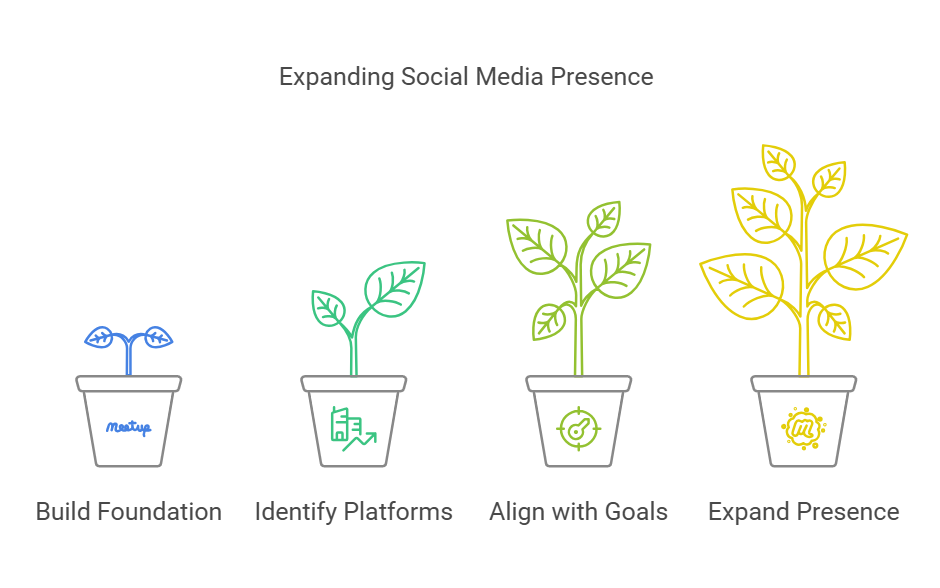
KEY TAKEAWAY
If you want to build a successful presence on social media , you have to be consistent, ready to adapt to any change or adjust to new circumstances, and have a deep understanding of your target audience.
Always remember, take small steps , focus on quality rather than quantity, and grow at your own pace.
